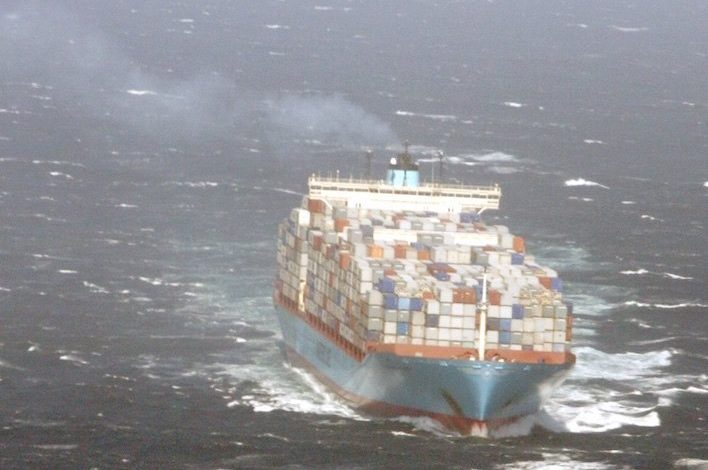How the IMO got the sulphur cap so wrong

Jeffrey McGee from Makai Marine Advisors makes his Splash debut today in which he looks at the sulphur cap from a different point of view.
Amidst the wave of content on the IMO’s 2020 implementation for 0.5% sulphur bunkers, most shipping commentators are either missing or deliberately evading one point — the IMO screwed up massively.
Although the IMO works hard to promote a safer maritime industry and cleaner environment, the IMO 2020 decision at MEPC 70 was an abject fail. As of October 2016, the refining industry was never going to be ready for a January 2020 implementation. Given existing capacity and anticipated projects — sufficient upgrading, desulphurisation and support capacity would not be available to eliminate 2-3 mbpd of the higher-sulphur resid streams and to provide sufficient distillate for 0.5% sulphur fuel blending.
The refining industry knew this, but the IMO had its own agenda. Unsurprisingly, their paid consultants provided a report that told the agency exactly what it wanted to hear (sufficient 0.5% sulphur fuel would be available), so that it could pursue its desired policy direction. Not leaving things to chance, the IMO came equipped with an August 2016 study from the Finnish Metrological Institute that suggested that a delayed 2025 implementation would cause 570,000 premature deaths. Regulatory job done.
Meanwhile, back in the commercial world, market participants are struggling to adjust to these regulations, exploring new fuel blends that could meet the 0.5% spec from expected blendstock availability. Although refiners can meet much of the demand from increased gasoil and vacuum gasoil volumes, and by using lower-sulphur resid streams, a view is emerging that 0.5% supply would fall short by 1.0-1.5 mbpd initially (including from the IEA and Wood Mackenzie). This volume of higher-sulphur resid would remain stranded, while additional gasoil would be unavailable to meet this shortfall.
Available at a cost, of course, yet the oil price commentary remains anodyne, suggesting that after some initial confusion, the markets will adapt and reach a suitable equilibrium. Of course, that equilibrium mechanism is price, and strict enforcement of IMO 2020 would require a massive auction process to price other mid-distillate users out of the market — trucking companies, airlines, home heating oil consumers, farmers, railroads and industrial users.
Auction processes are messy, clouding the oil price picture. The IEA has suggested a jump in gasoil prices of 20-30% in 2020, while Morgan Stanley has argued similarly for US$850/tonne gasoil and US$90/bbl Brent prices. Veteran oil analyst, Philip K. Verleger, sees a dire outcome from IMO 2020, with crude oil prices exceeding US$200/bbl. His message may seem alarmist, but he has assessed the impact of a full implementation. The other analyses are balancing lower compliance rates with the price levels required to destroy enough onshore distillate demand.
Oil market participants are aware of this, and thanks to the July testimony of oil analysts before the U.S. Senate, IMO 2020 is now firmly on Washington DC’s radar. The unpleasant response to IMO 2020 signalled that incumbent politicians are unlikely to tolerate this sort of economic disruption during an election year. In fact, the Senate tasked the US Environmental Protection Agency with studying the financial impact of IMO 2020, just days after those hearings.
Meanwhile, the IMO has become increasingly combative on the subject, with officials insisting on no delay and that “excuses are thin”. They cite the long timeline to amend the regulations for their inability to defer the timing, yet have rushed through tougher enforcement rules. The IMO is set to adopt MARPOL amendments to prohibit the carriage of non-compliant fuels on vessels without scrubbers at MEPC 73 this October, so that they can enter into force by March 2020. Nothing signals a bureaucratic organisation so wildly out of touch with reality, as one pushing tougher enforcement of a condition that cannot exist. The IMO should concentrate on accommodating the growing view that non-compliance will be widespread and may represent 30% of current HSFO bunker usage. This redirected focus, however, would require the IMO to admit their regulatory failure at MEPC 70, which is unlikely. The stakeholders at risk from IMO 2020 have limited time remaining to force greater realism at MEPC 73.

I fully understand Mr McGee position, but reducing the pollution is never a wrong decision. Let the oild price rise and this dirty fuel will leave more quickly our lifes.
Very true and courageous write up. Look forward for more of this kind.
Atleast Indian refineries will take couple of years more to start producing the grade